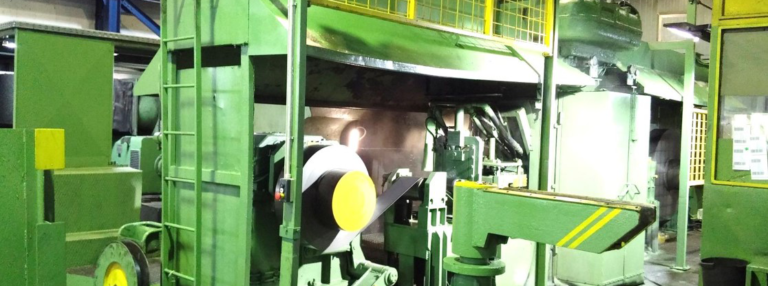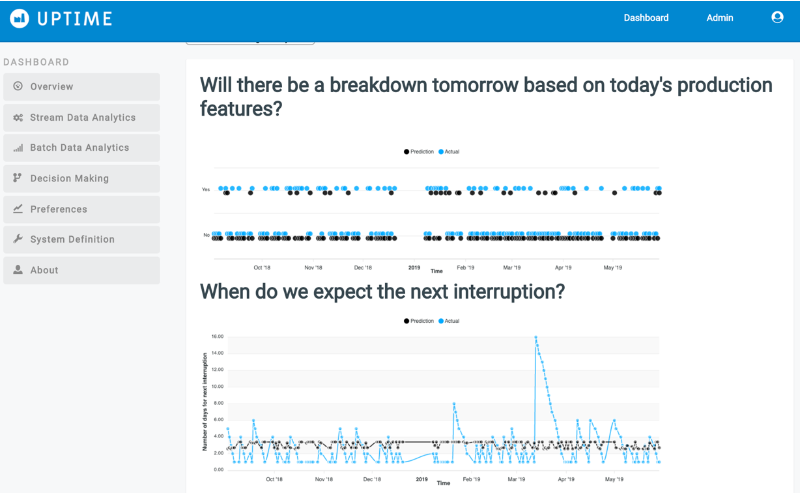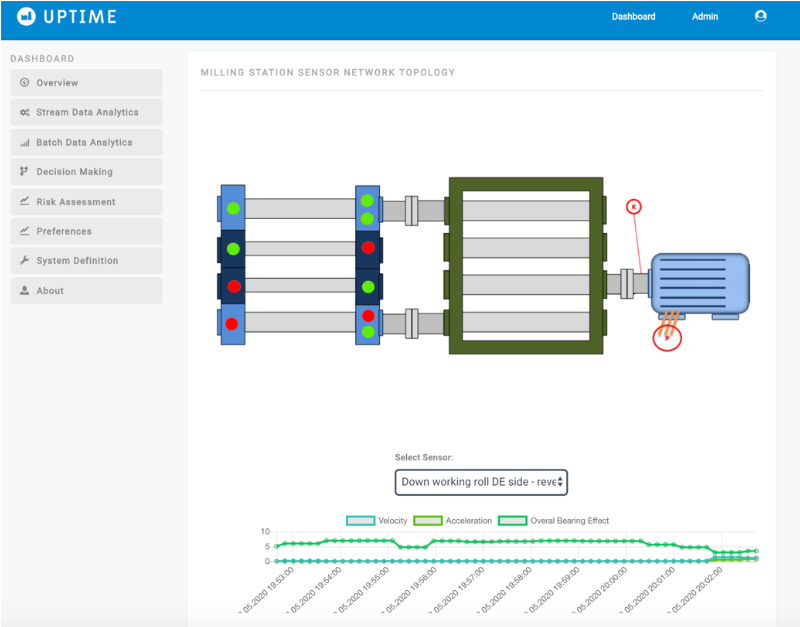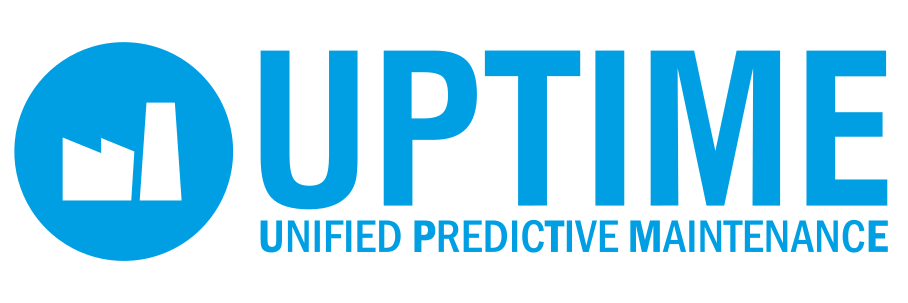UPTIME Predictive Maintenance: Lessons Learned and...
Read MoreCold Rolling
Predictive Maintenance in Cold Rolling for Steel Strapping Production
The use case deals with cold rolling mill for the production of steel strapping. Cold rolling is a process of reduction of the cross-sectional area or shaping a metal piece through the deformation caused by a pair of rotating in opposite directions metal rolls. Cold rolling occurs with the metal below its recrystallization temperature.
Within UPTIME following questions are addressed: are all of the maintenance activities performed at a certain period of time necessary or can maintenance intervals be expanded in order to eliminate the economic impact? It is of outmost importance for M. J. Maillis to have their machine or a piece of equipment that can tell its current health status and the degree to which that status deviates from normal or healthy along with predictions about its future health state as well as actions recommendations. The ability for machines to perform self-assessment, on the basis of which decision making can be significantly enabled, will allow improvement on their products’ entire life cycle.

Interview with M.J.Maillis S.A.
Interview with UPTIME project partner Vasilis Boursinos, General Manager of M.J.Maillis S.A. Industrial Packaging Systems and Technologies, who is based in Athens. He shared his views with us on the benefits of predictive maintenance for MAILLIS’ cold rolling, which produces steel strapping. With UPTIME having entered the evaluation phase, MAILLIS can reflect upon the results already achieved, the challenges that need to be overcome and how these results, upon successful evaluation, can become part of the MAILLIS Modus Operandi.
MAILLIS‘s offer combines high-quality packaging materials and state‐of‐the‐art technology, ensuring that metal producers enjoy reliable, durable, proven and high‐speed strapping and wrapping technology at the optimal cost. MAILLIS uses cold rolling mills to produce rolling products with the smallest possible thickness tolerances and an excellent surface finish. Given an entry steel coil of 4 tons weight, 233 mm width and 2 mm thickness, MAILLIS produces steel straps over the whole thickness spectrum down to 0.4 mm.
How has MAILLIS performed maintenance activities so far?
Cold rolling is actually a process through which the steel band’s cross sectional area becomes thin, by imposing hydraulic pressure through 2 sets of counter-rotating steel rolls. Each passage results in a reduction of thickness by approximately 25%. Roller mill maintenance is performed in 4 areas, namely rollers, bearings, drives and auxiliaries. The demand for changing over the milling rollers comes from either their regular wear or from an unexpected damage, which can occur due to either a defective raw material or an equipment malfunction.
When this occurs, rolls are removed from the stand for grinding. This usually happens every eight hours for the work rolls and every week for the backup rolls. The worn rollers go to the workshop for grinding their surface and give back their initial shape. Each time the rolls are removed for grinding some roll diameter is lost. After several regrinding, the diameter of the roll becomes so small that the rolls are no longer useful. Bearing maintenance would include frequent addition of small quantities of grease during operation. Periodical checks and measurements will be performed also to drives and auxiliaries.
How will UPTIME improve your maintenance service performance?
The MAILLIS business case provides a tool for UPTIME to address different aspects of a significant innovation problem, describing users‘ needs, operational problems and underlying challenges. Illustrating innovation implications on a common use case, sharing the same datasets, and utilizing outputs from other teams are all benefits of having an integrated picture of the general problem. It mainly deals with real time monitoring of generated sensor data and some operational variables, recommendations to the personnel, e.g. to proceed with replacement of a mill roller as well as analysis of production of data, which enables tracking of performance of specified KPIs.
At the end of the project, it is expected that MAILLIS will have a machine that reports its current health status along with the appropriate data analytics and metrics. Moreover, UPTIME will allow predictions about equipment‘s future health as well as recommendations for future actions and enable machines performing self-assessment, on which decision-making can be followed to advance equipment maintenance and facilitate the machine components and products life cycle.


What have been achieved so far after the implementation phase of the UPTIME Platform in the MAILLIS Case?
Advancements in most areas covering the operations of MAILLIS have been observed by incorporating the UPTIME solution. Though not exhaustive, the list of the main advancements in terms of impact can be summarized as follows:
● Monitoring and prediction of shocks
Using UPTIME_SENSE, MAILLIS can now be alerted for the presence of shocks, a task that was very difficult to perform with visual or acoustic inspection before UPTIME. This is partly due to the extreme physical conditions present in the milling station.
Incorporating UPTIME_DETECT_PREDICT has also helped predict future shocks, thereby facilitating preventative actions to be conducted by MAILLIS staff.
● Monitoring and prediction of defects in bearings
In the same manner, MAILLIS can detect and predict a potential galling occurring in the bearing contact surfaces by utilising special sensor infrastructure that can monitor the galling both during the initial formation and as this develops.
● Incorporation of new maintenance strategies
Using UPTIME_DECIDE, forecasts concerning shocks and bearing defects generate suggestions of custom maintenance actions. These can be integrated into new maintenance plans that, as a whole, reduce downtime and overall maintenance cost.
● Estimation of roller operational time and future damage probability
By combining UPTIME_DETECT_PREDICT with UPTIME_ANALYZE and deep learning techniques, MAILLIS can now combine maintenance and Overall Equipment Efficiency (OEE) data with streaming data from sensors and obtain estimations of the Remaining Useful Life for each roller. Furthermore, the presence of future roller defects (e.g. marks) can also be predicted with good accuracy.
● Risk estimation
By using UPTIME_FMECA, MAILLIS can have at any time an overview of the criticality of any one of the components that comprise the milling station.
What are the main challenges in the implementation phase and some lessons learned so far?
In order to achieve the results, various obstacles, both foreseen and unforeseen, need to be overcome. The main challenges, in terms of effort spent, include:
● Finding reliable technical service providers and equipment suppliers. Intensive participation and involvement of the Procurement Department are strongly required, in close cooperation with the Financial Department.
● The requirement for extensive engagement in the exploitation of the data obtained and the application of the results to the industrial process. We often face the need to review not only the design of the necessary equipment but also the type and amount of data to be collected.
● The efficient cooperation of the employees involved in the project. That cannot always be achieved without interruptions due to the nature of such project, which is common to many Industry 4.0-related endeavours.
● Technical difficulties in installing and maintaining the sensor network itself. The extreme physical conditions present in the milling station cause damage to the sensors. Custom installation and placement techniques need to be devised to overcome this problem.
Our experience from the project so far makes us quite optimistic about the remaining steps; it also encourages us to continue the effort to improve the way we collect and exploit the data we receive.
What are the next steps for the MAILLIS Business Case?
The next step involves the evaluation of our achievements in terms of production-related KPIs. More specifically, overall maintenance cost, overall downtime and overall production output will be measured and compared both to past data and to control data gathered from other milling stations, in which UPTIME has not yet been implemented.
After a positive evaluation, we plan to implement the program in different processes, i.e. applying the UPTIME solution in other Maillis’ Group production sites.
PUBLIC DELIVERABLES
DELIVERABLE 6.1: MAILLIS Business Case, Conceptualisation and Evaluation Strategy
D6.1 provides comprehensive description of the MAILLIS Business case, including as-is and to-be business processes and identification of MAILLIS stakeholders/business, system and technical requirements.
SCIENTIFIC PUBLICATIONS
-
A RAMI 4.0 View of Predictive Maintenance: Software Architecture, Platform and Case Study in Steel Industry
Bousdekis A., Lepenioti K., Ntalaperas D., Vergeti D., Apostolou D., Boursinos V. (2019). In: Proper H., Stirna J. (eds) Advanced Information Systems Engineering Workshops. CAiSE 2019. Lecture Notes in Business Information Processing, vol 349. Springer, Cham
RELATED ARTICLES
UPTIME 6th Newsletter – Edition 06/2020
PDF Sign up 26.06.2020 WELCOME TO...
Read MoreUPTIME_DECIDE
UPTIME_DECIDE Proactive Decision Making Module https://www.youtube.com/watch?v=TyGj0BO3aJs&t=12s...
Read MoreUPTIME Proactive Decision-Making Component
UPTIME Proactive Decision-Making Component : UPTIME_DECIDE...
Read MoreUPTIME 3rd Newsletter – Edition 2019/05
PDF Sign up 22.05.2019 WELCOME TO...
Read More